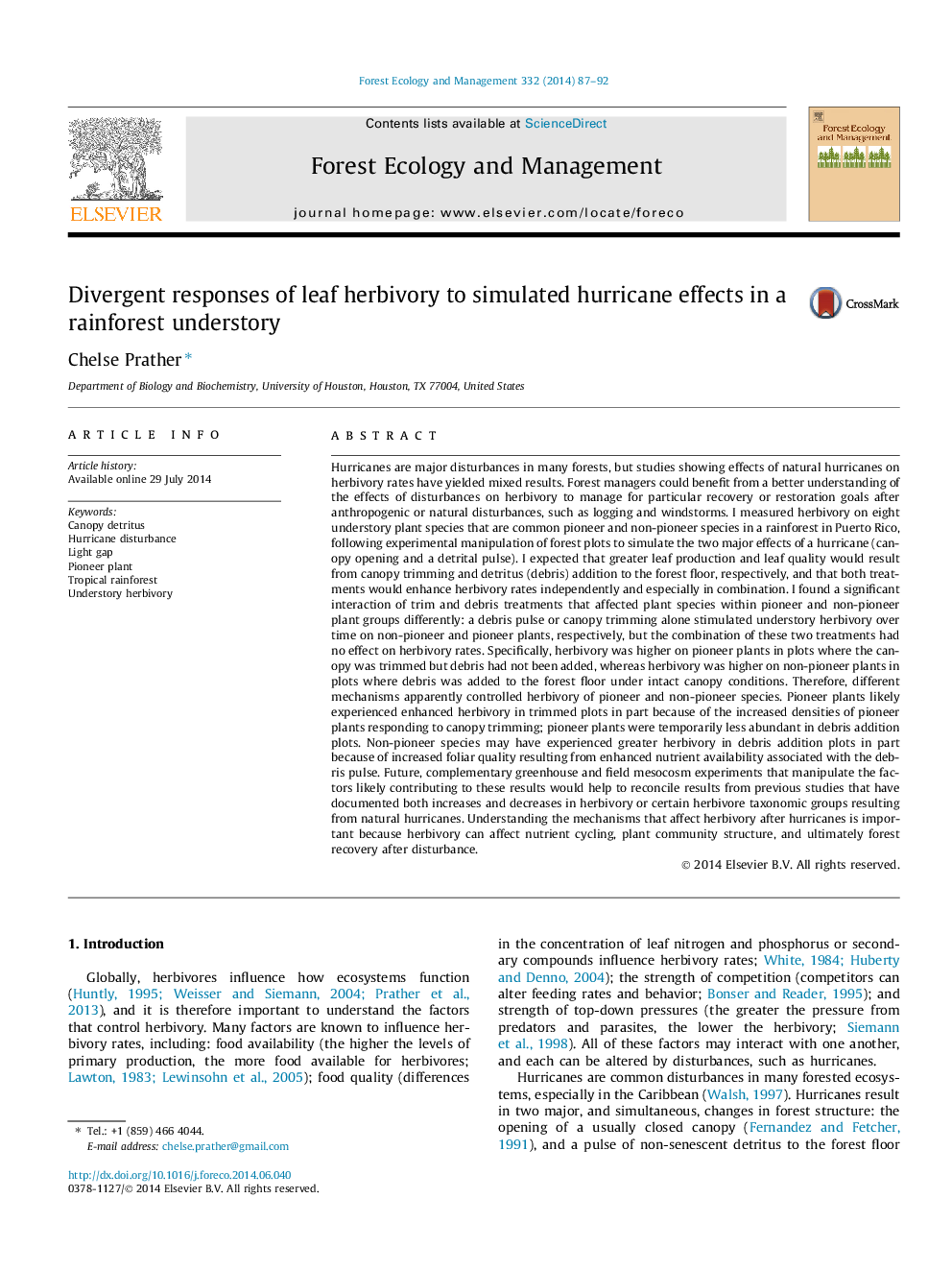| کد مقاله | کد نشریه | سال انتشار | مقاله انگلیسی | نسخه تمام متن |
|---|---|---|---|---|
| 86492 | 159193 | 2014 | 6 صفحه PDF | دانلود رایگان |
• The effects of a simulated hurricane on understory herbivory were determined.
• Canopy opening increased herbivory on pioneer species.
• Debris addition increased herbivory on non-pioneer species.
• Changes to herbivory after disturbances may alter forest recovery.
Hurricanes are major disturbances in many forests, but studies showing effects of natural hurricanes on herbivory rates have yielded mixed results. Forest managers could benefit from a better understanding of the effects of disturbances on herbivory to manage for particular recovery or restoration goals after anthropogenic or natural disturbances, such as logging and windstorms. I measured herbivory on eight understory plant species that are common pioneer and non-pioneer species in a rainforest in Puerto Rico, following experimental manipulation of forest plots to simulate the two major effects of a hurricane (canopy opening and a detrital pulse). I expected that greater leaf production and leaf quality would result from canopy trimming and detritus (debris) addition to the forest floor, respectively, and that both treatments would enhance herbivory rates independently and especially in combination. I found a significant interaction of trim and debris treatments that affected plant species within pioneer and non-pioneer plant groups differently: a debris pulse or canopy trimming alone stimulated understory herbivory over time on non-pioneer and pioneer plants, respectively, but the combination of these two treatments had no effect on herbivory rates. Specifically, herbivory was higher on pioneer plants in plots where the canopy was trimmed but debris had not been added, whereas herbivory was higher on non-pioneer plants in plots where debris was added to the forest floor under intact canopy conditions. Therefore, different mechanisms apparently controlled herbivory of pioneer and non-pioneer species. Pioneer plants likely experienced enhanced herbivory in trimmed plots in part because of the increased densities of pioneer plants responding to canopy trimming; pioneer plants were temporarily less abundant in debris addition plots. Non-pioneer species may have experienced greater herbivory in debris addition plots in part because of increased foliar quality resulting from enhanced nutrient availability associated with the debris pulse. Future, complementary greenhouse and field mesocosm experiments that manipulate the factors likely contributing to these results would help to reconcile results from previous studies that have documented both increases and decreases in herbivory or certain herbivore taxonomic groups resulting from natural hurricanes. Understanding the mechanisms that affect herbivory after hurricanes is important because herbivory can affect nutrient cycling, plant community structure, and ultimately forest recovery after disturbance.
Journal: Forest Ecology and Management - Volume 332, 15 November 2014, Pages 87–92
